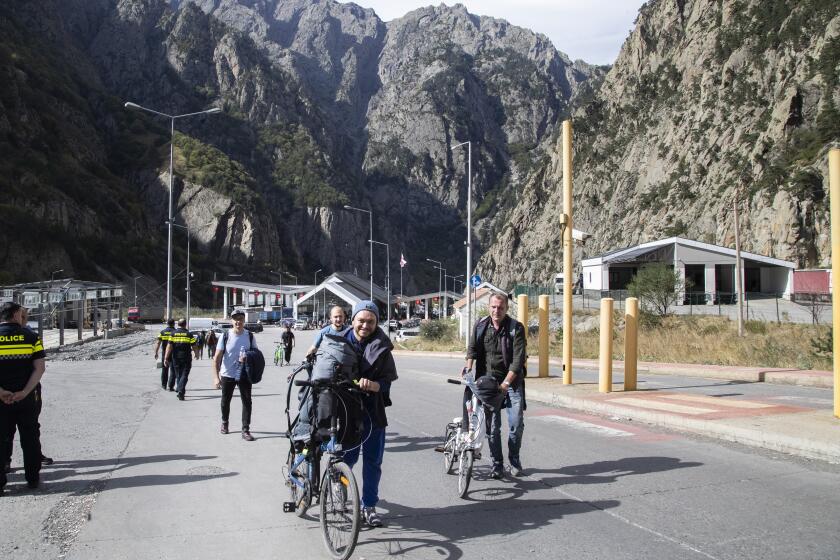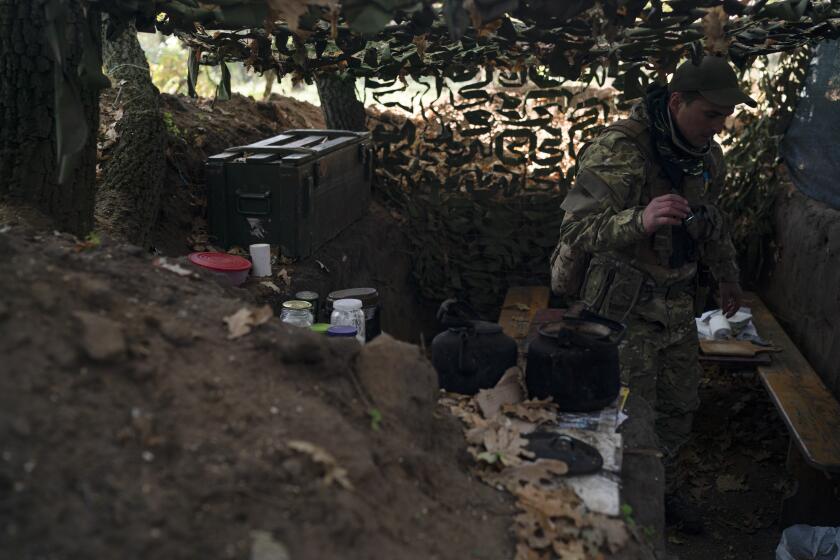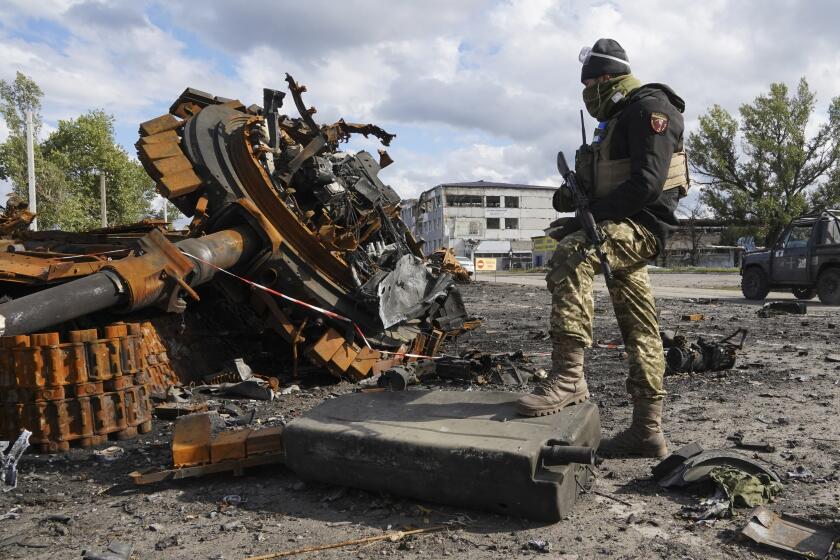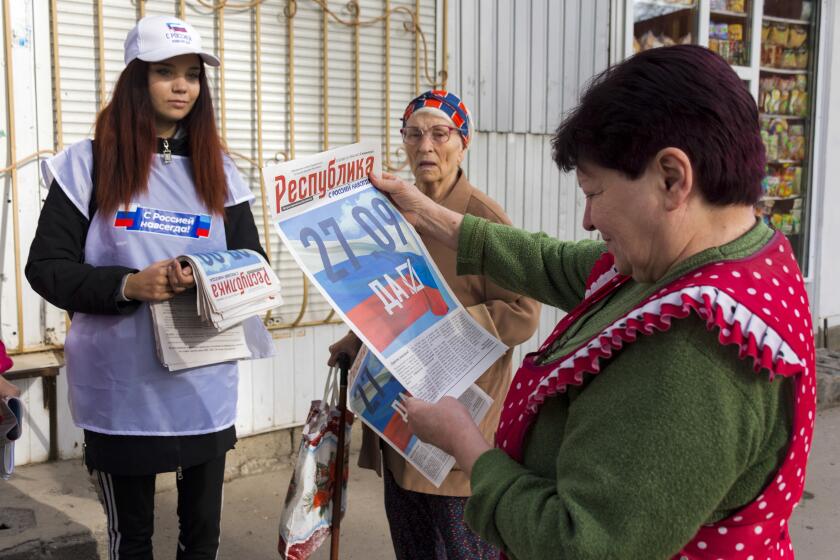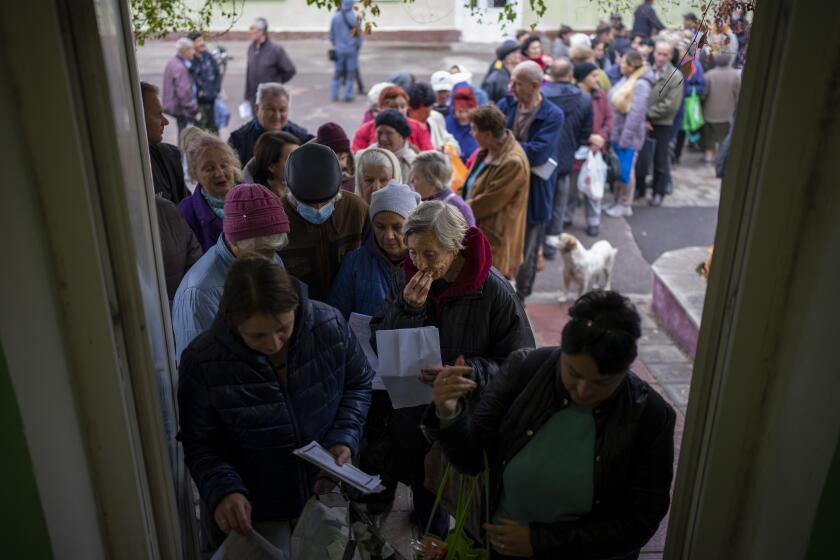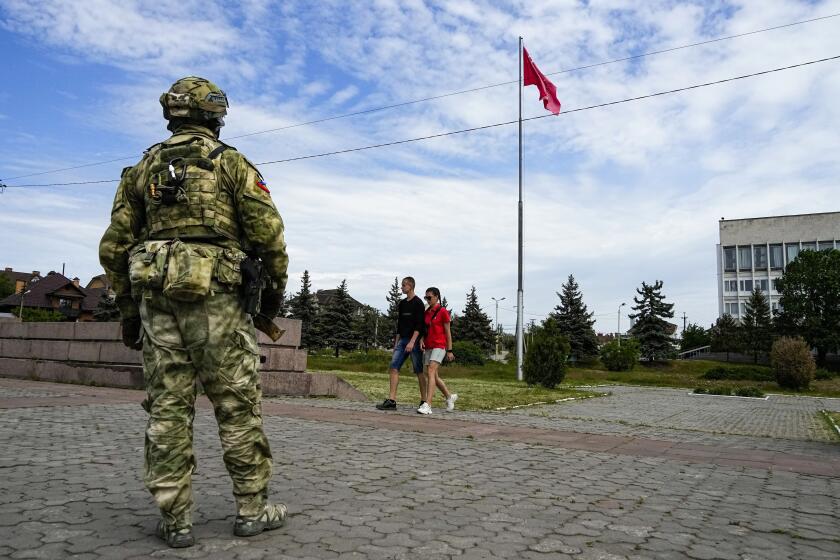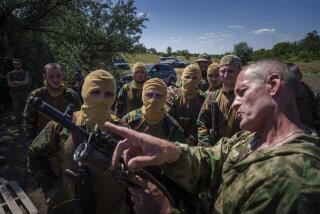‘How long can this go on?’ Russia’s chaotic draft leaves some soldiers cold and without gear
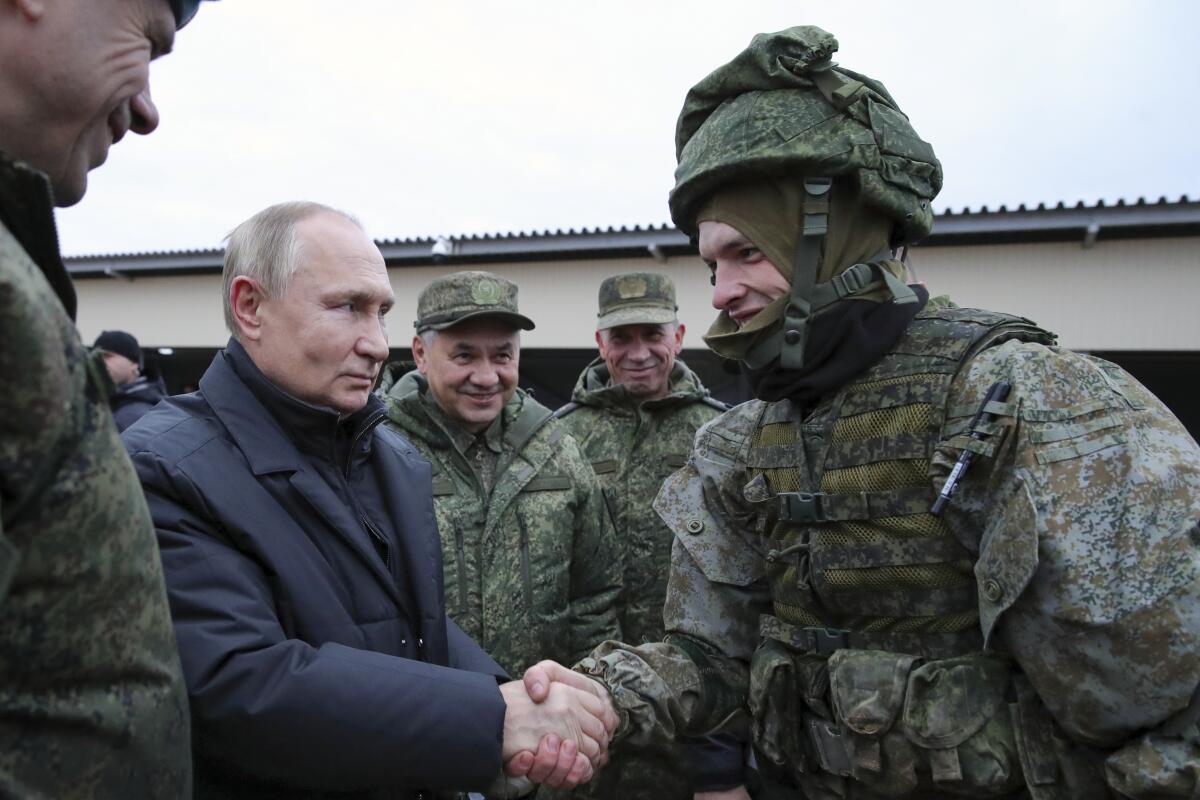
The mobilized reservists whom Russian President Vladimir Putin visited last week at a firing range southeast of Moscow looked picture-perfect.
Kremlin video of the young men headed for the war in Ukraine showed them in mint-condition uniforms, equipped with all the gear needed for combat: helmets, bulletproof vests and sleeping bags. When Putin asked if they had any problems, they shook their heads.
That stands in stark contrast with the complaints circulating widely on Russian news outlets and social media of equipment shortages, poor living conditions and scant training for the new recruits.
Since Putin announced a partial mobilization Sept. 21, independent media, human rights activists and those called up have painted a bleak picture of a haphazard, chaotic and ethnically biased effort to round up as many men as possible and push them quickly to the front lines, regardless of skill, training and equipment.
Videos on Russian social networks showed conscripted men complaining of cramped and filthy accommodations, toilets overflowing with trash and a lack of food and medicine. Some showed men displaying rusty weapons.
In one video, a group of draftees milled in a field, claiming that they had been left there with no food or shelter. Other clips depicted men forced to sleep on bare benches or tightly packed on the floor.
In numbers comparable to the size of Putin’s 300,000-strong mobilization, Russian men are fleeing military call-up. Not everyone welcomes them.
“We didn’t seek you out; you called us. Here, look at this! How long can this go on?” an exasperated voice says in a video.
Putin’s decree on the partial mobilization didn’t outline the criteria for draftees or say how many would be called up. Defense Minister Sergei Shoigu said it would affect only about 300,000 reservists with relevant combat or service experience.
Conscription protests have been harshly put down, and tens of thousands of men fled Russia to neighboring countries to avoid being pressed into service.
In the week after the decree, a young man opened fire on a recruitment officer in the Siberian city of Ust-Ilimsk, seriously wounding him. On Oct. 15, a shootout at a training camp in the southern Belgorod region killed 11 people and wounded 15 others. Enlistment offices and other administrative buildings also have been set on fire.
Russia’s mobilization of army reservists has proved unpopular, with hundreds of thousands of men leaving the country to avoid the draft.
It’s now clear that in a country where almost all men under 65 are registered as part of the reserve, the mobilization process wasn’t carried out carefully. There has been a flood of reports of summonses being served to those with no military experience. Police rounded up men in the streets of Moscow and other cities, or raided hostels to apprehend guests of fighting age. Enlistment offices often skipped required health checks.
The hasty call-up will hardly achieve anything other than “slowing down the advances” of Ukrainian troops in the 8-month-old war, military analyst Pavel Luzin said in an interview.
Moscow is simply “prolonging the agony” in Ukraine, said Luzin, a visiting scholar at the Fletcher School at Tufts University.
Activists also say ethnic minorities in some regions were drafted in disproportionate numbers. Videos circulated of protests in the Muslim majority region of Dagestan, with relatives complaining that the area was providing more recruits than elsewhere.
As Russia’s military performance weakens, a notorious mercenary group, long part of the Ukraine fight, steps into spotlight.
Vladimir Budaev of the Free Buryatia Foundation told the Associated Press that Indigenous people in Russia’s Far North and along the Mongolian border were “rounded up in their villages.”
In remote regions of Sakha and Buryatia, enlistment officers scoured the taiga for potential draftees and “handed out summonses to anyone they met,” he said.
According to Yekaterina Morland, an ethnic Buryat volunteer at the Asians of Russia Foundation, Buryatia has seen mobilization rates up to six times higher than Russia’s European regions.
In the first two weeks of the call-up, authorities in some regions reported sending home hundreds of men who were drafted despite not meeting the criteria.
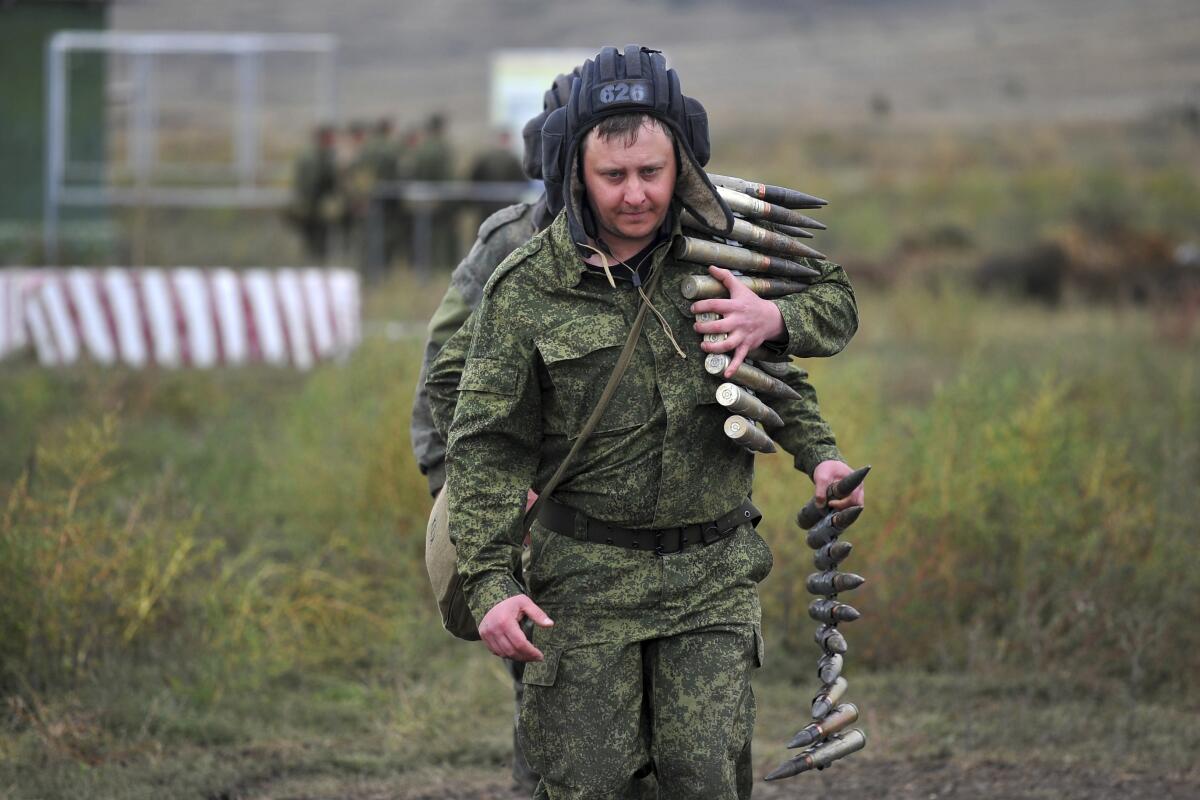
“The task of a military enlistment office is to recruit — recruit whoever they can grab,” says Elena Popova, the coordinator of the Movement of Conscientious Objectors.
Putin himself publicly acknowledged “mistakes” in the process and demanded its improvement.
But even when the summonses went to those who had served in the army, it didn’t necessarily mean that they had battlefield skills. Some former conscripts often don’t get proper military training when they serve and instead are engaged in menial labor.
A woman who spoke to the AP on condition of anonymity because she feared reprisals said her 31-year-old husband did his mandatory service six years ago and had “no training at a firing range, or any combat drills in the field,” but authorities tried to draft him anyway.
Start your day right
Sign up for Essential California for the L.A. Times biggest news, features and recommendations in your inbox six days a week.
You may occasionally receive promotional content from the Los Angeles Times.
In fact, he had held a weapon only once, when they were taught how to strip down and reassemble an automatic rifle, she said. Mostly, she added, “they were sweeping [the compound], cleaning the snow.”
Relatives of conscripts reported having to spend their own money on gear and basic necessities. Online groups were formed to raise funds for equipment.
One campaign was run by Kremlin-backed lawmaker and state TV host Yevgeny Popov, who said reservists in the Taman artillery division got shoes and clothes but had “an acute shortage of drones, walkie-talkies, smartphones with maps [for gunners], binoculars, headlamps [and] power banks,” he said.
Kremlin spokesman Dmitry Peskov on Wednesday acknowledged ongoing problems with equipment for the draftees but said that “vigorous measures taken to rectify the situation are already yielding the first positive results.”
He added that regional authorities were involved in providing “the missing gear” and that Deputy Prime Minister Denis Manturov “is personally responsible for this” in a coordination council Putin has created.
Russian media reported multiple deaths of reservists in Ukraine, with their relatives telling news outlets that they had received very little training.
Russia is escalating its military and political campaign to take over Ukrainian territory.
When asked by a reporter why several reservists had died in Ukraine only three weeks after being called up, Putin confirmed that training could last as few as 10 days and as many as 25.
Luzin, the military analyst, said Russia isn’t able to train hundreds of thousands of men. “The army was not ready for mobilization. It never prepared for it,” he said.
Putin has promised to finish the mobilization drive by November, when the regular fall draft is scheduled. Military experts and rights groups say enlistment offices and training camps can’t process both at the same time, warning that the call-up may resume months later.
As of mid-October, 222,000 reservists have been recruited, Putin said. Whether it will be possible to enlist another 80,000 in the remaining two weeks is unclear.
To try to broaden the pool, the Russian parliament Wednesday lifted a ban on mobilizing men who have been convicted of a grave criminal offense and have been released from prison but whose convictions are still on the books.
Russian news reports say many of those called up under Putin’s mobilization of 300,000 reservists haven’t been provided with basic equipment.
Even though masses of Russian men are no longer fleeing the country and street protests have all but halted, there are still those resisting the effort.
Independent and opposition-leaning media have published instructions on how to avoid the call-up legally. Rights groups advise men not to sign a summons — which is required for it to be considered legally served — and not to go near enlistment offices.
Some men are seeking alternative civil service, a right that lawyers say is guaranteed by the constitution.
Kirill Berezin, 27, responded to a call-up notice shoved under the door of his St. Petersburg apartment by going to a enlistment office to apply for the alternative civil service, but he was taken to a military unit anyway, according to his friend, Marina Tsyganova.
Ukrainian forces pressing a counteroffensive in the south have zeroed in on Kherson, a strategic city seized by Russia in the early days of the war.
Berezin, who has since been sent to a training facility in southern Russia, submitted a document to his commanders that said he “can’t serve with weapons, can’t kill people and help people who do it” because it was “contrary to my conscience.”
Tsyganova told the AP that she represented Berezin in a St. Petersburg court, which last week rejected his lawsuit, saying that only regular conscripts under 27 are eligible for alternative civil service. His defense team plans to appeal, she said, and at the very least, she hopes he won’t be sent to Ukraine while the legal battle proceeds.
More to Read
Sign up for Essential California
The most important California stories and recommendations in your inbox every morning.
You may occasionally receive promotional content from the Los Angeles Times.
